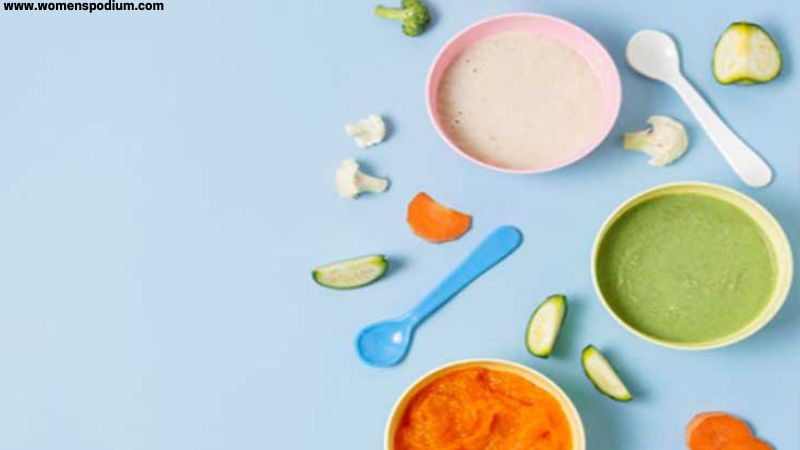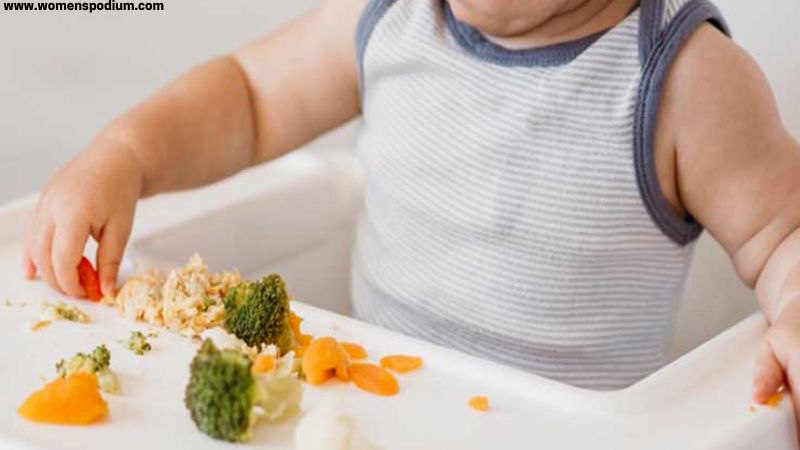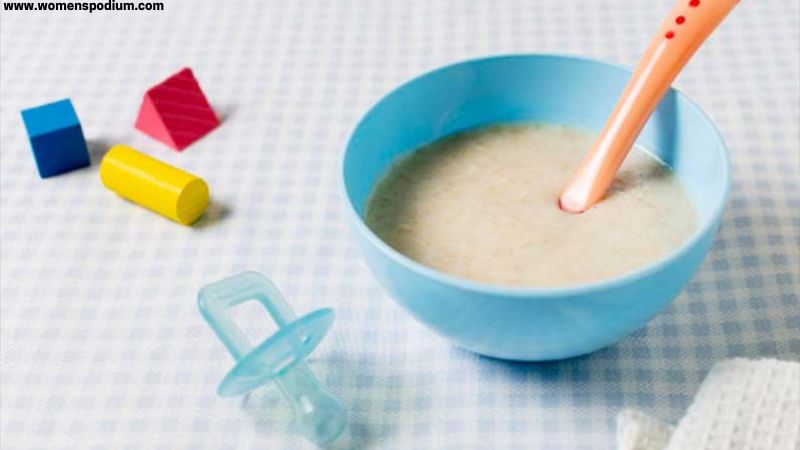
What are the baby food stages, and why does baby food have stages? Baby food stages are the stages and textures of the food you should introduce to your child with age. They are confusing because stages are not standardized. The AAP (American Academy of Pediatrics) advises that “two rules apply across the board: Begin with stage 1 foods for beginners, and don’t offer your child toddler foods, which often contain chunks until he is an experienced eater.” In addition, parents should consult with the pediatrician before beginning any new commercial or homemade baby food for their infant.
Stages of Baby Food by Their Age
There are 3 or 4 baby food stages, depending on what type of foods the baby can consume. Parents can learn how to cook baby food recipes on YouTube and try other homemade baby food recipes using fruits and vegetables. These stages are:
1. Stage 1 (4-6 Months Old Baby): Puree

For stage 1 baby food, vegetables can be the best baby food stage 1 recipe. A mother should start single-ingredient stage one food for babies. At this 1st stage, baby food like rice cereal, oatmeal cereal, and thinly pureed fruits and vegetables can be a baby’s first solid food experience. These foods are easy to digest for the tiny tummy.
Also Read: Parents must ensure that the food their baby consumes is fortified and enriched food with nutrients.
2. Stage 2 (7-8 Months Old Baby): Thicker Consistency

In this period, when the baby is 7-8 months old, the stage two baby food will consist of single-ingredient and strained, instead of thin puree. These include meshed mini potatoes and blanched baby spinach. Other examples of baby food recipe stage 2 include apples, mango and bananas, boiled vegetables, cereal, and Butternut Squash.
3. Stage 3 (9-12 Months Old Baby): Soft, Chewy Chunks

In the third stage, when the baby is 9-12 months old, the stage 3 baby food includes foods containing more grain and small chunks to encourage chewing. For example, chicken, vegetables, spaghetti, rice, fruits, beechnut organic food, and teething biscuits are the best baby food ideas at this stage.
4. Stage 4 (1-2 Years Old Baby): Table Food

At this stage, the babies have the most physical activities, and they can eat the food which the rest of the family is eating. These age recommendations are just general guidelines. Some babies are ready for stage 2 foods before they are 7-8 months, while others might not be ready until they are 9-10 months old.
Steps for Feeding Baby Food

Parents should follow the 4-day wait rule when introducing a portion of new food for all baby food stages. Offer your baby the same new food for four days to test for allergies to that food. This rule is for homemade baby food too. Never introduce more than one new food at a time.
The “4-day wait rule” is an excellent practice to follow because:
- It helps pinpoint allergic reactions.
- It identifies any digestive issues.
Allergic reactions can occur within the first 24 hours, but digestive issues with new foods may take longer to appear.
Commercial Baby Food

Make sure to go for only high-quality foods for your baby. Parents may find uncountable products in the market for different baby food stages. In addition, they must ensure commercial baby food’s quality and standard. These baby food jars have labels according to baby food stages and levels of development, with stage 1 food for babies who are just starting solids and stages 2 and 3 for babies and toddlers with more experience. Before purchasing these products, check the expiration date on the jar’s label and make sure the vacuum seal is intact. Also, avoid buying added sugar foods. They will only add extra calories. Buy one ingredient food rather than combinations.
Homemade Baby Food

Homemade baby food will help the parents ensure that no allergenic foods are present in it. Parents can include extra ingredients with homemade baby food recipes to provide only high-quality and energetic foods for their kids. And parents can feed their babies according to their needs. They know better what foods are best for their babies among baby food stages with age.
Usually, homemade food develops healthy eating habits because of the dedication of mothers to make only high-quality, healthy baby foods and snacks. These eating habits keep the babies healthy and energetic. Babies will not suffer any nutrient deficiency when they consume balanced food. Moreover, the nutrient ratio is also more in homemade baby food recipes than in commercial ones. Therefore, homemade food can save money, and output can be greater than other foods
Also Read: There is no compulsion to what time is the best time to eat fruits, but you must check if your child faces indigestion.





